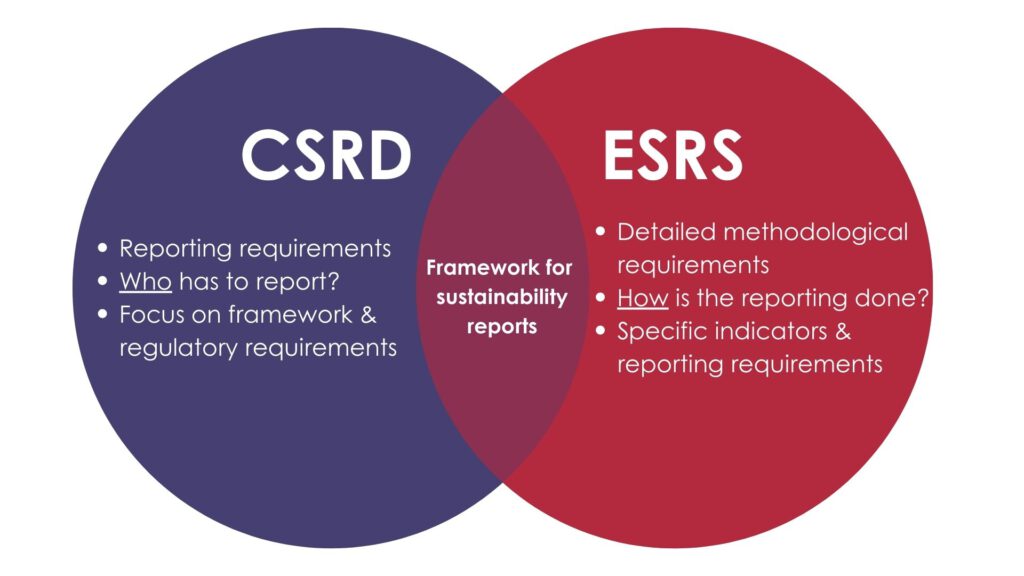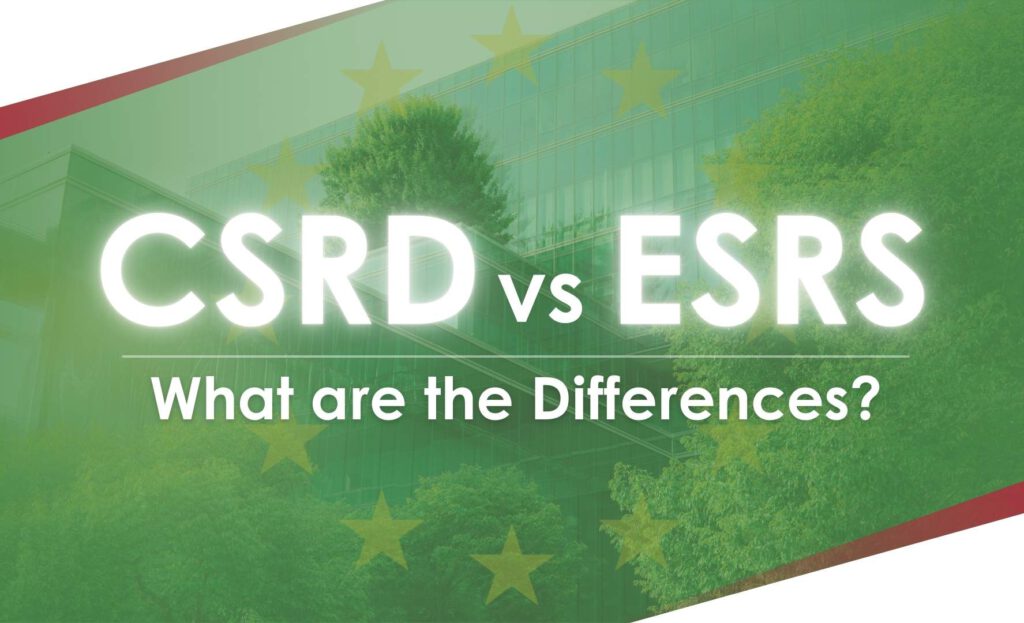The terms CSRD and ESRS are currently major topics, especially when it comes to sustainability reports and the growing demands on companies. But what exactly is behind these abbreviations and what are the main differences?
What is the CSRD?
The Corporate Sustainability Reporting Directive (CSRD) is an EU regulation requiring companies to provide more comprehensive and detailed information on sustainability issues. It is a further development of the previous Non-Financial Reporting Directive (NFRD) and aims to increase the transparency and comparability of sustainability data. The CSRD affects significantly more companies than the old NFRD – including many small and medium-sized enterprises (SMEs).
Since 2024, companies must report more comprehensively on their environmental, social and governance (ESG) impacts, depending on their size, sector and business activities. The goal is clear: a more sustainable economy in Europe and the promotion of long-term investment in responsible companies.
What are the ESRS?
The European Sustainability Reporting Standards (ESRS) are specific guidelines that define how companies should prepare their reports as part of the CSRD. They were developed by the European Financial Reporting Advisory Group (EFRAG) and provide the content basis for reporting.
The ESRS provide clear guidelines on which indicators companies must record, what data quality is required and which procedures should be used in order to present the ESG objectives in a comprehensible and comparable manner. The ESRS are divided into various categories – from climate protection and social responsibility to corporate governance – and provide clear guidelines for systematically compiling the required information.
What is the difference between CSRD and ESRS?
Although the CSRD and the ESRS both address sustainability reporting, they cover different aspects;
- CSRD as a regulatory framework: The CSRD determines which companies are required to report and specifies the sustainability information that must be disclosed.
- ESRS as a methodological basis: The ESRS provide precise instructions on how the required information should be collected, prepared and published in order to ensure a high level of comparability and transparency.
This division of tasks means that the two complement each other perfectly: the CSRD sets the objectives and requirements, while the ESRS ensure that these are met in a comprehensible and uniform manner. This provides companies with a solid basis for effectively mastering the requirements of sustainability reporting.

Why is this important for companies?
CSRD and ESRS ensure that companies have clear sustainability guidelines. This strengthens both transparency and trustworthiness towards stakeholders. Companies that ignore the requirements or implement them too late risk legal consequences and reputational damage.
For companies listed on the stock exchange or with close supply chain connections, compliance becomes mandatory. It is therefore worth dealing with the new requirements at an early stage and adapting internal structures and processes.
Conclusion
The CSRD and ESRS represent significant steps toward building a more sustainable European economy. While the CSRD sets the framework, the ESRS provide companies with the tools to fill out this framework in a meaningful way. For companies, this means new opportunities, but also challenges in implementation. Addressing these issues at an early stage is the key to remaining successful and future-proof.







